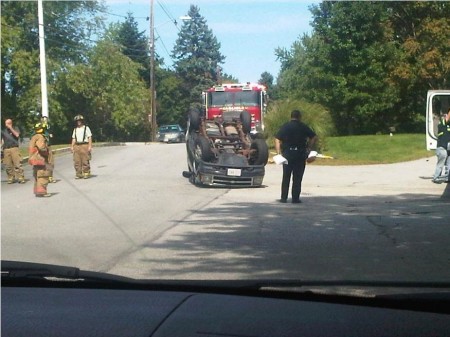
Who was at fault?
If you were injured in an automobile accident, and were not “at fault” or were only partially “at fault,” you should contact me to see if you have a bodily injury claim for your injuries, pain and suffering, and any medical bills or wages not covered by your Personal Injury Protection (“PIP“), MedPay or health insurance coverages. There are numerous scenarios, some more complicated than others. All of them require coordinating with different insurance companies and policy provisions. If you were injured in a truck accident you are likely to be dealing with a commercial policy. If you were hit in an MBTA bus accident, must comply with the Massachusetts Tort Claims Act. It may be that you are the victim of a “hit and run” driver, and that you may or may not have gotten the license plate number. It may be that you were hit by an underinsured or uninsured driver. You may have been a pedestrian hit by an automobile or truck. A Pedestrian hit by a bicycle will need to seek compensation from the bicyclist, whose house insurance policy may cover the claim.Serious injuries
In order to pursue a bodily injury claim for pain and suffering, Massachusetts law requires that your injuries be serious, and limits claims to injuries having over $2,000 of medical bills, a fracture, scarring, a loss of hearing or sight, or death.
What to do if you have been in an accident
If you or a family member has been injured in an motor vehicle accident, your immediate concern is to make sure you receive medical care for your injuries. Some people will be taken by ambulance to a hospital, but others will decline an ambulance, and need medical attention after they have left the scene of the accident. Massachusetts residents are likely to have insurance coverage for medical care through their automobile and health insurance policies.
Police
If you or your passengers are able to, call the police from the scene of the accident. They will investigate the accident, and may provide you with an “exchange form,” which lists information about the drivers involved in the accident and their insurance information. If the police don’t give you the exchange form at the scene, you should be able to pick it up at the police station.
Police report
After you have taken care of your medical treatment, request a copy of the police report. There is usually a small fee for the report. Give this report, as well as the exchange form to your lawyer.
Other driver and witnesses
Make sure you exchange information with the other driver, including your names, addresses, and phone numbers, license numbers, and insurance companies. Do your best to get the names, addresses and phone numbers of other passengers and any witnesses.
Photos
Take photos of the cars and the scene of the accident, as well as of injured persons and any damaged property. Use your cell phone camera unless you have a camera. If you are unable to take photos while at the scene of the accident, take photos after you have dealt with your medical care.
Insurance companies
Call your automobile insurance company and let them know you have been in an accident. They will start a claim for you, and provide you with an Application for Benefits – Personal Injury Protection, commonly known as the “PIP” application. They will give you a claim number and may email you. Complete a draft of the PIP application and provide me with your draft before mailing it to your insurance company.
Do not speak with the insurance company or adjuster for the other driver. If they contact them, let them know you have or are getting an attorney, and that you would appreciate them speaking with your attorney.
Crash report
M.G.L. Chapter 90, Section 26 requires the person operating a motor vehicle involved in a crash in which any person was killed, injured, or in which there was damage in excess of $1,000 to any one vehicle or other property, to complete and file a Crash Operator Report (commonly known as a “crash report”) with the Registry of Motor Vehicles within five days after the crash. A copy of the completed crash report must be mailed to the local police department and to your insurance company.
We have created a Crash Operator Report form that can easily be completed and saved on your computer.
Complete a draft and provide me with your draft before filing it.
Prepare for meeting with me
Please bring the following to your meeting with me: your driver’s license, registration, insurance policy declarations page, exchange form, police report, your draft Crash Operator Report, your draft PIP application, photos, any documents received from any insurance companies, information provided to you by the other driver, and any medical records you may have. If you have completed a client intake sheet, bring that with you as well, or return it to me by email.
Useful links
What is in my Insurance Policy
Frequently Asked Questions on Auto Insurance
Uber & Lyft Cases
U.S. Supreme Court rejects Uber bid to avoid driver pay lawsuit
Legal History of Uber/Lyft Injury Cases
Massachusetts sues Uber and Lyft over driver classification
Uber Driver Found Guilty in 2013 Collision That Killed 6-Year-Old Girl

